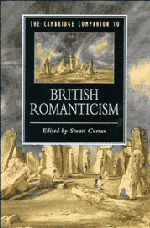Book contents
- Frontmatter
- 1 Romanticism, criticism and theory
- 2 Romanticism and Enlightenment
- 3 Poetry in an age of revolution
- 4 German Romantic Idealism
- 5 Romanticism and language
- 6 Culture's medium
- 7 Romantic Hellenism
- 8 Women readers, women writers
- 9 Romantic fiction
- 10 Romantic poetry
- 11 The sister arts in British Romanticism
- Chronology
- Bibliography
- Index
1 - Romanticism, criticism and theory
Published online by Cambridge University Press: 28 May 2006
- Frontmatter
- 1 Romanticism, criticism and theory
- 2 Romanticism and Enlightenment
- 3 Poetry in an age of revolution
- 4 German Romantic Idealism
- 5 Romanticism and language
- 6 Culture's medium
- 7 Romantic Hellenism
- 8 Women readers, women writers
- 9 Romantic fiction
- 10 Romantic poetry
- 11 The sister arts in British Romanticism
- Chronology
- Bibliography
- Index
Summary
The terms of my title will probably seem to some readers rather bland, to others inevitably contentious. Romanticism has functioned as a period term, with somewhat different limits in different countries, and its use has led to a tradition of attempts at defining what it is, or what is most central to it. Criticism tends to pass us by as an unassuming description of what we do if we teach or study literature in universities, while theory is one of those terms that has caused arguments in seminars and tantrums at dinner parties. But criticism is by no means an innocent term, nor need theory always bite in the way that its bark has seemed to promise, if indeed it bite at all.
So it may be as well to begin with some working definitions - not trenchant specifications of exclusive or exact definitions of these terms, but loose explanations of what I mean by them, and of how they will function in the following pages. By Romanticism I mean, very roughly, the writings of the late eighteenth and early nineteenth centuries, sharing a general historical situation but not necessarily held together by any essential or prescriptive characteristics. Literary critics and historians have traditionally posited such characteristics in a manner allowing them to distinguish between what is more or less “romantic,” early and late romantic, pre- and postromantic, highly or antiromantic. Such usages are seldom consistent, and have mostly been employed to justify one set of preferences over others according to some standard or other of exemplary historicality.
- Type
- Chapter
- Information
- The Cambridge Companion to British Romanticism , pp. 1 - 24Publisher: Cambridge University PressPrint publication year: 1993
- 5
- Cited by

